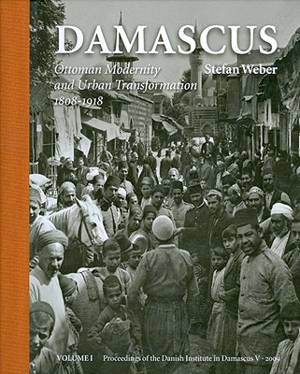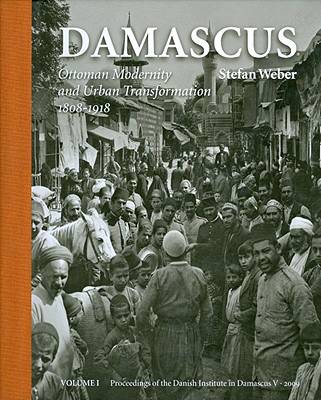
- Retrait gratuit dans votre magasin Club
- 7.000.000 titres dans notre catalogue
- Payer en toute sécurité
- Toujours un magasin près de chez vous
- Retrait gratuit dans votre magasin Club
- 7.000.0000 titres dans notre catalogue
- Payer en toute sécurité
- Toujours un magasin près de chez vous
Description
Damascus, capital of the Ottoman province of Syria and one of the most important centres of the classical Muslim World, faced the same developments in the 19th century as other urban centres in the Mediterranean area and beyond. In the course of the industrial revolution in Europe and the radical expansion of a world-wide network of traffic and communication, new ideas, techniques, goods and architectural forms spread and challenged locally established patterns of urban and social organization. These challenges led to an increasing orientation of urban and social structures toward supra-regional models. Still, Damascus never became a European city. Instead, houses, public buildings and bazaars were modernized in ways particular to Damascus. To understand the complexity of this process, this study examines society, architecture and urban planning including the documentation of over one thousand buildings of the endangered UNESCO World Heritage Site of Damascus. The history of these buildings and their transformation are discussed and many unpublished historical photographs provide an insight into lost urban textures and private worlds. The reader will be introduced into the rich legacy of Damascene public buildings and lavishly decorated courtyard houses. New forms of dwelling developed that corresponded to social changes within families, while behaviours in newly-constructed public areas, the adoption of different modes of dress, and the development of previously unknown interior designs mirrored the changing views of world, urban society and self. From a micro-historical approach, this book unfolds spaces of everyday life of local actors during one of the most important turning points in the history of the Middle East. Who were the agents of change and what types of local adaptations and innovations developed as responses to the challenges of modernity?
Spécifications
Parties prenantes
- Auteur(s) :
- Editeur:
Contenu
- Nombre de pages :
- 1125
- Langue:
- Anglais
- Collection :
- Tome:
- n° 5
Caractéristiques
- EAN:
- 9788779344242
- Date de parution :
- 15-06-10
- Format:
- Livre relié
- Format numérique:
- Genaaid
- Dimensions :
- 290 mm x 333 mm
- Poids :
- 5828 g

Les avis
Nous publions uniquement les avis qui respectent les conditions requises. Consultez nos conditions pour les avis.






